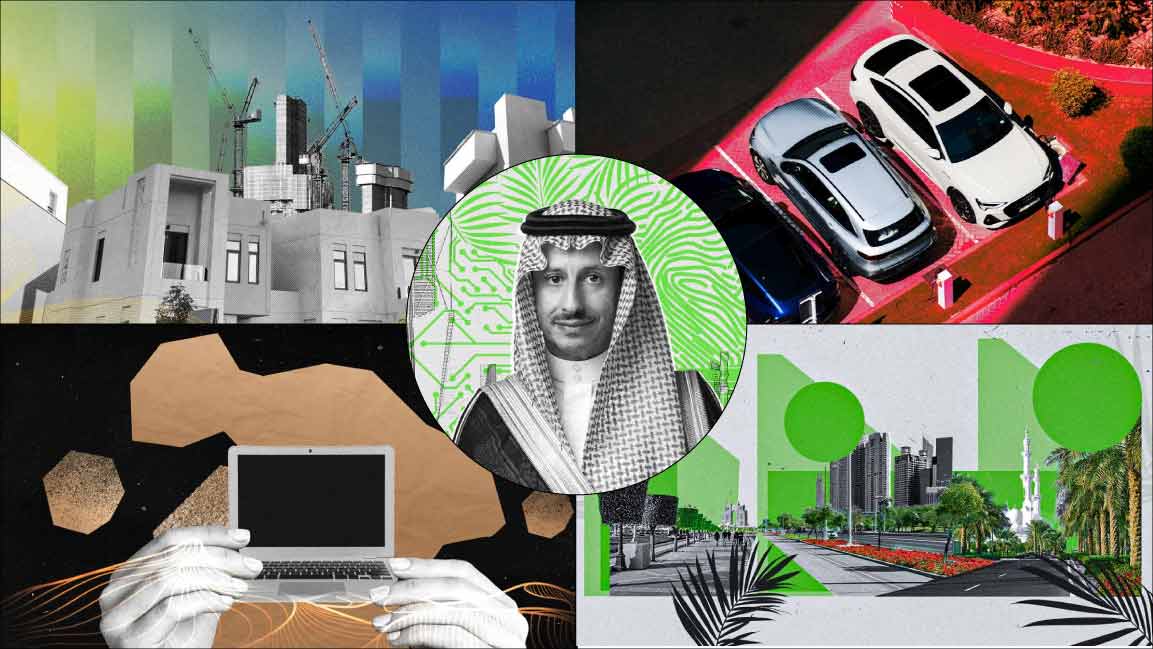- | 9:00 am
Extraordinary flooding in Dubai is a wake-up call. Can the region design flood-resilient cities?
Experts emphasize the need for proactive urban planning amid unprecedented flooding across Oman and UAE, urging cities to rethink their approach to climate-related risks.

Last week, the world saw streets turn into rivers, abandoned cars floating in floodwaters, passenger jets navigating through deep water at the runway, and flood-ravaged malls and neighborhoods in desert cities. Heavy rains followed by severe flooding in the UAE and Oman resulted in the death of at least 21 people. The UAE experienced what the government described as its heaviest rainfall in 75 years.
The experience that unfolded in the hours after the flooding underscored how Middle East cities are ill-equipped to address extreme climate challenges.
“We should assume that we’re going to have a big flood like this; its occurrence is less than a hundred-year flood, which is one percent likely to occur in any given year. That’s a significant risk,” says Dr. G. Mathias Kondolf, fluvial geomorphologist and professor of environmental planning at UC Berkeley’s College of Environmental Design.
The need for proactive urban planning and infrastructure development is increasingly evident, even in desert regions.
“Planning for floods and other climate-related risks requires a shift in mindset, acknowledging that such events are not rare anomalies but potential realities that cities must prepare for. Despite this awareness, implementing and enforcing stringent land use regulations to mitigate these risks remains complex and challenging,” adds Dr. Kondolf.
With rising sea levels, increased precipitation, and more frequent weather events becoming normal, cities need to fundamentally rethink their infrastructure to ensure resilience in the face of environmental shifts.
“The recent flooding in Dubai has starkly highlighted the need for cities to modify their infrastructure to combat the effects of extreme weather,” says Chandra Dake, CEO of Dake Rechsand. He adds this event provides the much-needed context to pinpoint key areas that require enhanced water management solutions. Implementing rain gardens, bio-retention ponds, and sustainable and decentralized water storages can significantly mitigate such recurrences and risks in the future.
“The necessity for cities in the Middle East to adopt more resilient urban planning and infrastructure becomes clear,” says Dr. Mohammad Radfar, Associate Professor in Urban Design and Planning at the University of Birmingham Dubai.
DESIGNING TO FLOOD: THE LOOPHOLES
Research by Anna Serra-Llobet, J. David Ta`bara and David Sauri examines the Tous dam collapse in Spain in 1982 and found that “the most favored policy measures regarding flood protection are of the ‘hard’ engineering kind.”
Further noting that “non-structural measures”, including the development of insurance programs, integral land-use planning, or local emergency plans, while seen as necessary, are not considered a priority by most policymakers.
These findings provide a blueprint for cities of the Middle East to future-proof floods.
Urban planning for floods in the region presents complex challenges that require thoughtful consideration and innovative solutions.
Even if development in vulnerable areas is necessary, for instance, in Oman, where wadi beds are common, structures should be elevated on stilts to minimize flood damage.
Dr. Kondolf also highlights the significance of adopting a proactive mentality. Citing coastal areas with high tidal flux, he explains that anticipating an emergency can help communities mitigate disaster risks and minimize the impact of flooding. In some regions, effective flood risk management has been achieved through proactive measures.
He cites devastating floods in Barcelona in the 1960s, which resulted in significant loss of life in shanty towns along the riverbanks. Subsequently, authorities designated these areas as ‘no build zones’, prohibiting construction.
Since then, no major floods of that magnitude have occurred. Despite this success, there remains a tendency in many places, including the US, for communities to rebuild in flood-prone areas even after experiencing catastrophic events.
According to Dr. Radfar, the urban sprawl in Dubai, characterized by its rapid growth over the last 40 years, highlights a critical oversight in environmental planning, particularly regarding water management. “The city’s existing infrastructure, overwhelmed by unexpected floods, points to a deficiency in planning for drainage systems capable of managing surface water effectively,” he adds. Traditional drainage systems are no longer adequate; sustainable drainage systems that incorporate functionality and environmental benefits must be integrated.
Secondly, the environmental impact of extensive impervious surfaces such as roads and parking spaces cannot be overstated. “Dubai has a car population exceeding 1.83 million, calling for attention to vast areas of hard surfaces that contribute to rapid runoff and reduced water infiltration. This not only exacerbates flooding but also affects the urban microclimate and reduces the quality of urban life,” Dr. Radfar adds.
Successful flood risk management hinges on a deeper understanding of various factors – city infrastructure, climate patterns, and land-use practices.
“To address these issues, urban planners must prioritize the integration of more landscaped and soft surfaces within city designs. These areas absorb rainwater, reduce runoff, enhance urban biodiversity, and provide recreational spaces for residents, contributing to a higher quality of urban life. By increasing permeable surfaces, cities can significantly mitigate flood risks and improve environmental sustainability,” says Dr. Radfar.
BEYOND A SHORT-TERM APPROACH
“The first step is to recognize the inevitability of this happening again. Climate change will make it more likely sooner,” says Dr. Kondolf.
Pointing to the approach of individuals buying houses in areas prone to flooding and selling them for investment purposes within a few years in the Middle East, there is a need for more responsibility. “This short-term mindset may work for individuals, but for a community, it may create a lot of unnecessary suffering,” adds Kondolf.
While it’s more challenging than flipping a switch, there is a need for a multi-structural approach.
“The severity of the floods has revealed alarming vulnerabilities in the urban landscape. But this rude awakening can also encourage us to build an environmentally resilient future,” says Dake.
To begin with, Dake suggests that by identifying low-lying areas prone to flooding, cities can strategically implement rain gardens and bio-retention ponds, which utilize natural processes to manage excess water. Additionally, incorporating decentralized water storage systems in flood-prone areas can play a pivotal role in enhancing our resilience against erratic rainfall. “Each step we take, no matter how small, is vital in our journey towards a more sustainable and robust urban environment,” he adds.
“Rethinking urban spaces to prioritize people over vehicles is essential. This entails designing multi-use spaces that accommodate pedestrians and cyclists, promoting a shift towards more sustainable modes of transportation. By doing so, cities can reduce their ecological footprint and enhance liveability,” Dr. Radfar says.
FLOOD PROOFING: THE WAY FORWARD
With science and technology, predicting extreme weather situations is possible. Dr. Kondolf says urban planners must take stock of where flash floods are likely to occur and build and side buildings out of harm’s way.
“Despite flash floods’ unpredictability, you can anticipate them and build to prevent extreme damage and prevent them [floods] from going through the center of the town. There’s a way to manage floods since you can’t eliminate them,” he adds.
Dr. Anna Serra-Llobet, a researcher at the University of California, Berkeley, has carried out extensive research on flood risk management policies, environmental planning, floods after the fire, the residual risk of extreme floods, and nature-based solutions for flood risk management, says, “Levees (and other hydraulic infrastructures such as dams or debris basins) create a false sense of security that encourages development behind, what is known as the ‘levee effect.’ This is also the unfortunate case of the Derna dam collapse last September in Libya and the post-fire debris flows that devastated the community of Montecito in California.”
The rebuilding approach must be more inclusive and design-centered.
Dr. Kondolf further highlights instances where effective flood risk management has minimized harm, such as along a river in Barcelona where devastating floods in the 1960s led to the designation of ‘no build zones,’ preventing further flood-related tragedies. However, he notes a persistent issue in many places, including the U.S., where communities continue to rebuild in high-risk areas despite past disasters due to private property rights and development pressures.
He also references debris flows in Montecito, California, where houses have been repeatedly destroyed by debris flows yet continue to be rebuilt due to property ownership rights. Similarly, flash floods in Egypt’s El-Sheikh El-Shazli in the mid-1990s impacted tourist areas, highlighting the challenges of implementing serious land-use regulations amidst development pressures, given that many tourist hotels have cropped up in flood-prone areas.
Furthermore, Dr. Kondolf emphasizes the short-sightedness of prioritizing immediate development over long-term flood risk mitigation.
He suggests experiencing more frequent, less catastrophic floods could enhance awareness and discourage development in hazardous areas.
To move forward, learning from what has occurred is essential.
Technology provides a means to future-proof, says Dake. “To prevent underground areas such as parking lots from flooding, integrating them with advanced materials that facilitate efficient stormwater management is essential,” says Dake.
He suggests that Middle Eastern cities install permeable surfaces to allow water to seep through and be absorbed to prevent flooding. These surfaces, sometimes incorporating a honeycomb structure for added efficiency, can be a simple yet effective solution to manage excess water and rainwater runoffs. “Coupled with smart drainage systems, these innovations ensure that even the most vulnerable areas remain functional, habitable, and safe during extreme weather conditions,” adds Dake.
Overall, the cities of the Middle East find themselves in a race against time to learn from their lessons and action change.
As Kondolf concludes, “There’s a short window after a flood where you can change policy, and it seems like it would have to come from the government recognizing this kind of threat and how to manage it better.”
He adds, “Individuals have a part to play, too. A city like Dubai has attracted many people from elsewhere who have no idea about the climate, so the government must take change into their hands.”








































